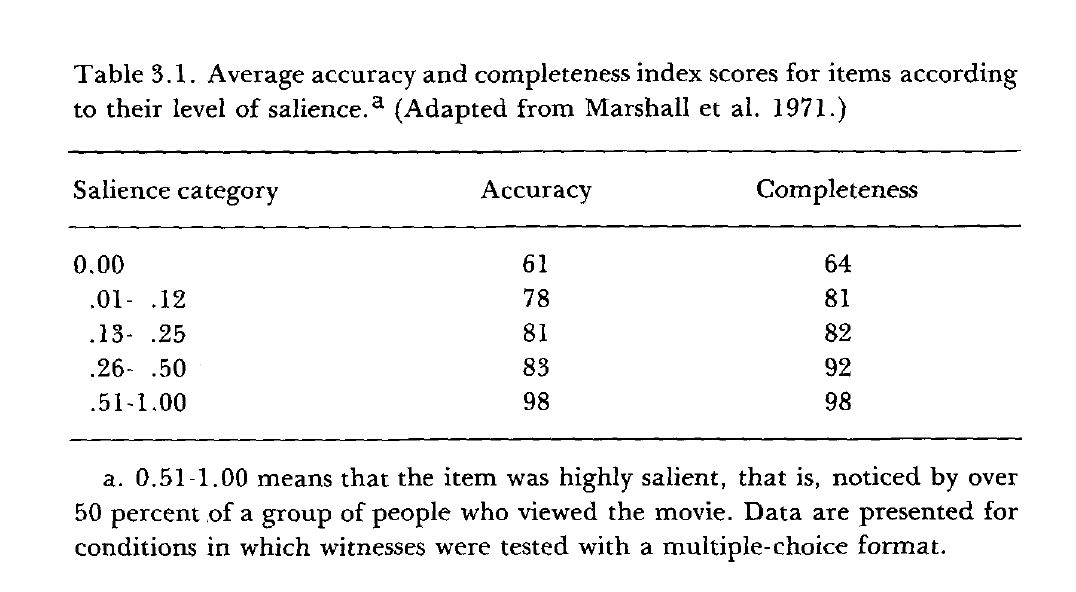Yes. Like how many shots were there? Where did the shots come from? Why is it that witnesses are wrong only on facts relating to the SBT?
Witnesses can be wrong. Sure. But studies show that they are generally right on details that a high number of witnesses recalled.:

Loftus, Eliz. F., Eyewitness Testimony, (Cambridge, MA: 1979), Harvard University Press at p. 27
In this case, a large number of people recalled details relating to the number of shots. 80% recalled exactly 3 shots and I expect you agree with them. How is it that they are so right on that but so wrong on other easily recalled facts? (This has nothing to do with pre-existing beliefs).
The witnesses were often wrong. Like on the direction of the source of the shots. A majority said the shots came from behind, but a large minority said they came from the front.
Why would witnesses be right about the number of shots? The radio station KLIF reported at 12:38 CST:
This KLIF bulletin from Dallas: Three shots reportedly were fired at the motorcade of President Kennedy today near the downtown section. KLIF News is checking out the report. We will have further reports. Stay tuned.
It is likely that some witnesses heard this on the radio, or heard people talking about the reports. This could influence them on how many shots they said there were.
I think it is possible that people might not remember the number of shots, as surprising as that may seem. The motorcycles backfired a lot. People might think it was a backfire. As late as z-312, it is clear that most people, not in the limousine or the follow up Secret Service car, realized that shots had been fired. Many were still clapping at that point. Without realizing in real time, that shots had been fired, and pre-occupied with seeing the President, they likely would not have kept a count of the number of "backfires/shots".
Why would people be wrong so much about the timing of the shots?
It would be easy to mistake the last shot, the shot at z-312, as two separate shots. A rifle shot makes a "Crack-Thump" sound, a double sound. This would be most distinct for the final shot, the one at 88 yards. For the shots at 43 and 63 yards, the "Crack-Thump" might come too close together to recognize as two separate sounds. Also, a fragment from the third shot struck metal, the windshield frame. This did not happen with the first shot.
I, of course, am not an expert on the perception of rifle sounds, but is plausible that at a shorter range, the "Crack-Thump" are too close together to perceive as two separate sounds. But at longer ranges, they are. And, for all I know, that transition may happen at around 75 yards.
If one looks at the "2nd and 3rd shots closer together" witnesses, a lot of them not only say these two shots were closer together, they say they were right on top of each other, "Bang-Bang".
Not a spacing of: "Bang" 5-second-pause "Bang" 3-second-pause "Bang"
but more like: "Bang" several-second-pause "Bang-Bang"
exactly as one would expect from witnesses who mistook the last shot as two different shots coming almost together.
If one discards all the "Bang-Bang" witnesses, and only use the "Bang"-pause-"Bang"-pause-"Bang" witnesses, I suspect that they might support a more evenly spaced out series of shots, consistent with "Bang"-4-second-pause-"Bang"-5-second-pause-"Bang".
In short, there are two different reasons a lot of witnesses get the spacing wrong. The third shot is the one most likely to be mistaken for two shots right on top of each other. And witnesses may have been influenced by over-hearing other witnesses, particularly over-hearing a "Bang-Bang" witness.